Anatomy and physiology are fundamental sciences studying the structure and function of living organisms. Anatomy focuses on physical structures, while physiology explores their functions and processes. Together, they provide essential knowledge for healthcare professionals, educators, and students. Understanding these subjects is crucial for diagnosing diseases, developing treatments, and promoting overall well-being. Various study guides, interactive tools, and resources are available to aid learning, making complex concepts more accessible and engaging for learners at all levels.
1.1 Overview of Anatomy and Physiology
Anatomy examines the structure of organisms, focusing on physical components and their relationships, while physiology explores how these structures function and interact. Together, they provide a comprehensive understanding of life processes, enabling insights into health, disease, and treatment. Study guides and resources simplify complex concepts for learners.
1.2 Importance of Studying Anatomy and Physiology
Studying anatomy and physiology is vital for understanding human health and disease. It equips healthcare professionals with essential knowledge, aiding in diagnosis and treatment. For students, it builds a foundation for advanced studies in medicine, nursing, and related fields, fostering critical thinking and problem-solving skills necessary for lifelong learning and professional success.
1.3 Different Branches of Anatomy and Physiology
Anatomy and physiology are divided into branches like developmental anatomy, embryology, surface anatomy, regional anatomy, gross anatomy, microscopic anatomy, and systematic anatomy. Each branch focuses on specific aspects, such as structure development, observable features, or detailed tissue studies, providing a comprehensive understanding of the human body’s complexity and function.
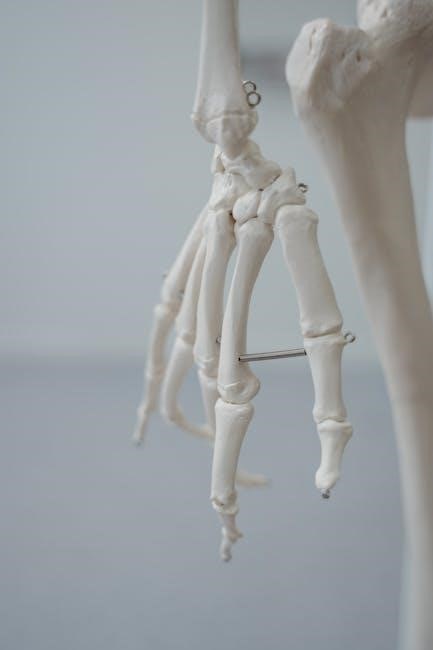
Types of Anatomy
Anatomy is categorized into types like gross, microscopic, developmental, surface, and systematic anatomy. Each focuses on specific structural aspects, providing a detailed understanding of the body’s organization and components.
2.1 Gross Anatomy
Gross anatomy examines large, visible structures of the body that can be studied without magnification. It includes organs, limbs, and tissues observable through dissection or surface inspection, providing foundational knowledge for medical professionals and students to understand the body’s overall structure and organization effectively.
2.2 Microscopic Anatomy
Microscopic anatomy delves into the study of tissues and cells, requiring magnification tools like microscopes. It reveals detailed structures invisible to the naked eye, such as cell morphology and tissue composition, essential for understanding disease mechanisms and advancing medical diagnostics and treatments.
2.3 Developmental Anatomy
Developmental anatomy examines the formation and growth of organisms from embryonic stages to maturity. It explores developmental processes, patterns, and abnormalities, offering insights into congenital conditions and normal growth. This field is crucial for understanding human development and its variations.
2.4 Surface Anatomy
Surface anatomy studies the external features of the body to understand internal structures. It involves identifying landmarks, such as bones, muscles, and organs, through observation and palpation; This branch is vital for clinical examinations, medical imaging, and surgical planning, providing a link between external observations and internal functions.
2.5 Systematic Anatomy
Systematic anatomy organizes the study of body structures based on organ systems, such as the skeletal, muscular, and nervous systems. This approach provides a comprehensive understanding of how different structures relate and function together, aiding in both educational and clinical applications.
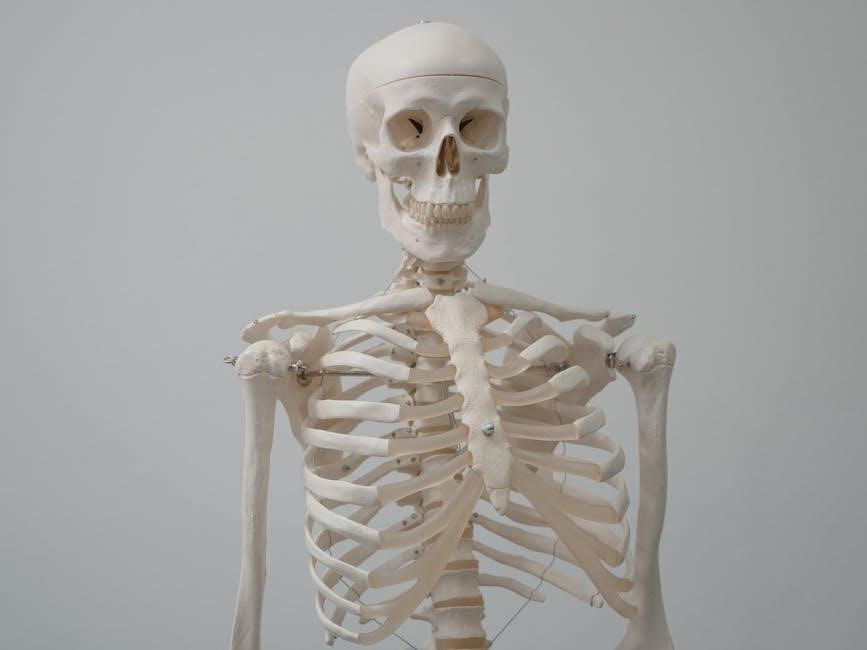
Key Concepts in Anatomy and Physiology
Key concepts include anatomical terminology, homeostasis, and levels of body organization, providing a foundation for understanding how structures and functions integrate to maintain life and health.
3.1 Anatomical Terminology
Anatomical terminology forms the language of anatomy, allowing precise communication about body structures. Terms describe location, direction, and orientation, using standardized prefixes, suffixes, and roots. Mastering this vocabulary is essential for understanding complex anatomical concepts and effectively conveying information in healthcare and educational settings. Consistent use ensures clarity and accuracy in descriptions.
3.2 Homeostasis and Feedback Mechanisms
Homeostasis is the body’s ability to maintain internal stability despite external changes. Feedback mechanisms, such as negative and positive loops, regulate this balance. Negative feedback reduces deviations, while positive feedback amplifies them. These processes are crucial for health, ensuring proper functioning of organs and systems, and maintaining overall well-being.
3.3 Levels of Organization in the Human Body
The human body is organized into six levels: chemical, cellular, tissue, organ, organ system, and organismal. This hierarchy allows for specialization and integration, enabling complex functions. Understanding these levels is essential for studying anatomy and physiology, as they provide a framework for analyzing how the body operates as a unified system.

Study Resources and Tools
Key resources include textbooks, interactive online platforms, and flashcards. Textbooks provide comprehensive coverage, while online tools offer visual aids and practice questions. Flashcards enhance memorization of anatomical terms and physiological processes, making studying efficient and engaging for learners.
4.1 Recommended Textbooks and Study Guides
Popular textbooks include “Anatomy and Physiology” by OpenStax, offering a free e-book with an accompanying study guide. “Anatomy and Physiology Study and Review Cards” provide concise summaries and visual aids. Additional resources like Simple Studies’ guides and TeachMeAnatomy’s interactive tools enhance learning with detailed explanations and practice questions for better retention.
4.2 Interactive Online Resources
Interactive online resources like TeachMeAnatomy and virtual dissection tools offer engaging ways to explore anatomy and physiology. Apps such as the Sharpen Study App provide bite-sized guides, videos, and quizzes. Websites with animations and practice questions, such as those from OpenStax, enhance understanding and retention of complex anatomical and physiological concepts.
4.3 Flashcards and Memorization Techniques
Flashcards are an effective tool for memorizing anatomical structures and physiological processes. Apps like Quizlet offer digital flashcards with terms like biological functions and anatomical positions. Mnemonic phrases and labeling exercises, found in resources like Anatomy and Physiology Study and Review Cards, enhance retention and simplify complex concepts for learners.
Practical Study Tips
Use interactive tools, effective note-taking, and time management to enhance learning. Flashcards, visual aids, and regular reviews help master complex anatomical and physiological concepts efficiently.
5.1 Effective Note-Taking Strategies
Organize notes systematically, using headings and bullet points for clarity. Highlight key terms and concepts, and use diagrams to visualize anatomical structures. Review and summarize notes regularly to reinforce memory and understanding of complex physiological processes and anatomical details.
5.2 Using Visual Aids for Better Understanding
Visual aids like diagrams, 3D models, and videos enhance learning by simplifying complex anatomical structures and physiological processes. Tools such as anatomy coloring books, interactive animations, and apps provide hands-on engagement, improving retention and making abstract concepts more tangible for students.
5.3 Time Management for Comprehensive Study
Effective time management is crucial for mastering anatomy and physiology. Break study sessions into manageable blocks, prioritize complex topics, and schedule regular review sessions. Utilize tools like calendars and to-do lists to stay organized and ensure consistent progress. Balancing focused learning with breaks enhances productivity and retention.

Common Challenges in Anatomy and Physiology
Students often struggle with memorizing complex anatomical structures, understanding intricate physiological processes, and maintaining motivation during lengthy study sessions. These challenges require strategic approaches to ensure effective learning and retention.
6.1 Difficulties in Memorizing Structures
Memorizing anatomical structures can be overwhelming due to their complexity and sheer volume. Utilizing flashcards, mnemonics, and interactive tools can enhance retention. Engaging with 3D models and labeling exercises also aids in understanding spatial relationships, making memorization more manageable and effective for learners.
6.2 Understanding Complex Physiological Processes
Physiological processes, such as homeostasis and neural signaling, can be challenging due to their intricate mechanisms. Breaking them into simpler steps and using visual aids like diagrams and animations can improve comprehension. Engaging with practice questions and case studies also helps reinforce understanding of these complex biological functions.
6.3 Staying Motivated During Long Study Sessions
Staying motivated requires setting realistic goals, using active learning techniques, and incorporating breaks. Engage with flashcards, quizzes, and interactive tools to maintain interest. Celebrate small achievements and remind yourself of the importance of mastering anatomy and physiology for your future career. Stay connected with study groups or online communities for support.
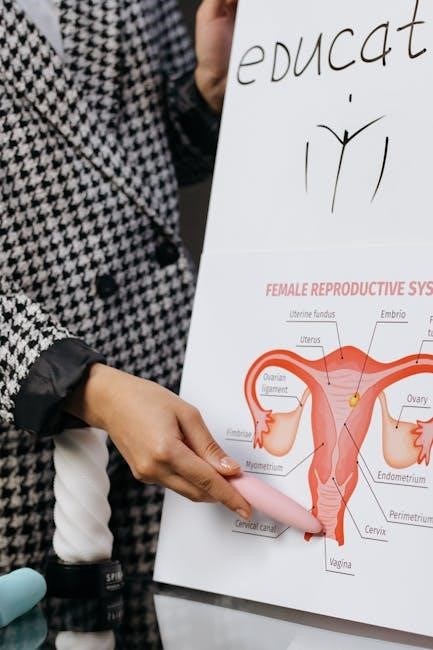
Final Exam Preparation
Effective final exam preparation involves reviewing key concepts, practicing with past papers, and using flashcards. Organize study sessions, focus on weak areas, and utilize interactive tools for better retention and confidence.
7.1 Reviewing Key Concepts
Reviewing key concepts involves focusing on major themes like anatomical terminology, body systems, and physiological processes. Use study guides, flashcards, and summaries to reinforce memory. Prioritize areas where understanding is weak, ensuring a solid foundation for exam success. Regular revision helps retain information and improves recall during assessments.
7.2 Practicing with Past Papers
Practicing with past papers helps familiarize yourself with exam formats and question types. It identifies weak areas, improves time management, and reduces exam anxiety. Regularly reviewing past exams enables focused study on frequently tested topics, enhancing overall preparedness and confidence for the final assessment.
7.3 Strategies for Tackling Multiple-Choice Questions
When tackling multiple-choice questions, read each question carefully and identify key terms. Eliminate obvious distractors first, then focus on the remaining options. Use process of elimination and understanding of anatomical and physiological concepts to select the most accurate answer. Time management and staying calm are crucial for optimal performance.
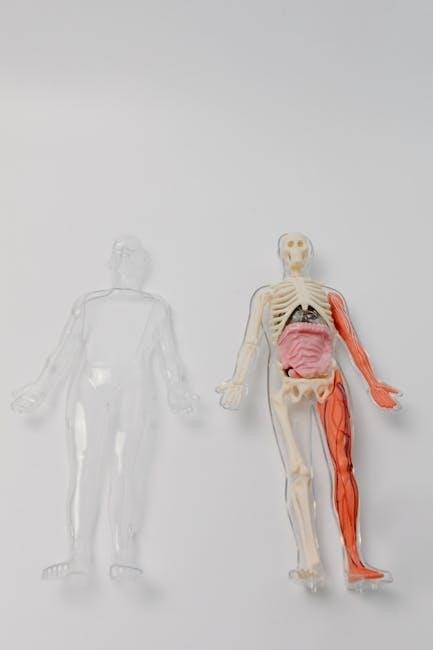
Anatomy and Physiology in Real-World Applications
Anatomy and physiology have real-world applications in healthcare, fitness, and forensic science, enhancing understanding of human function, aiding in disease diagnosis, improving athletic performance, and solving crimes.
8.1 Clinical Relevance in Healthcare Professions
Understanding anatomy and physiology is crucial for healthcare professionals, enabling accurate diagnoses and effective treatments. Knowledge of body structures and functions aids in identifying disorders, developing treatment plans, and conducting surgeries. This foundation is essential for nurses, doctors, and therapists to provide high-quality patient care and improve health outcomes.
8.2 Application in Fitness and Sports Science
Understanding anatomy and physiology is vital in fitness and sports science, enabling professionals to design effective training programs, enhance athletic performance, and prevent injuries. Knowledge of muscle function, movement mechanics, and energy systems helps optimize physical conditioning and improve overall health for athletes and individuals alike.
8.3 Importance in Forensic Science
Anatomy and physiology are crucial in forensic science for identifying human remains, determining cause of death, and analyzing injuries. Knowledge of body structure and function aids in reconstructing crime scenes, estimating post-mortem intervals, and linking evidence to suspects, playing a key role in criminal investigations and legal proceedings.
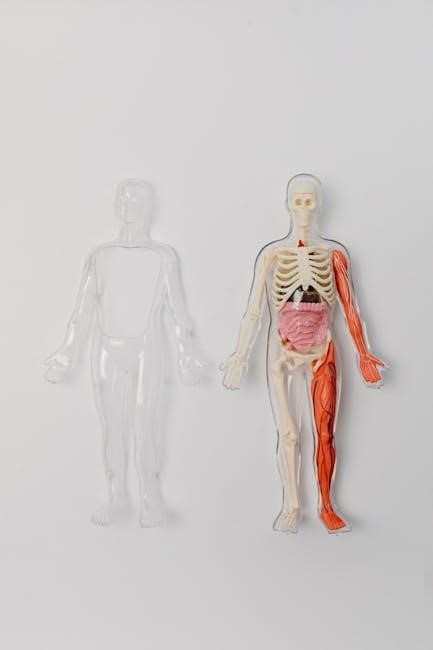
Advanced Learning Opportunities
Advanced learning in anatomy and physiology involves specialized courses, certifications, and hands-on experiences like anatomy labs and dissections. Engaging with professional communities and interactive tools enhances practical skills and deepens knowledge.
9.1 Specialized Courses and Certifications
Specialized courses and certifications in anatomy and physiology offer in-depth knowledge and practical skills. These programs often include advanced topics, hands-on training, and recognized credentials. Resources like the Anatomy and Physiology Coloring Book and Sharpen Study App provide interactive learning tools and simulations to enhance expertise. Certifications validate proficiency, benefiting healthcare professionals and educators.
9.2 Participating in Anatomy Labs and Dissections
Participating in anatomy labs and dissections provides hands-on experience, enhancing understanding of human structures. Virtual dissection tools and 3D models, like those mentioned in study guides, complement physical labs, offering immersive learning. These activities are invaluable for visual and kinesthetic learners, aiding in memorizing complex anatomical details effectively and engagingly.
9.3 Engaging with Anatomy and Physiology Communities
Engaging with anatomy and physiology communities fosters collaboration and knowledge exchange. Online forums, study groups, and specialized platforms offer resources like flashcards, quizzes, and shared study guides. These interactions provide support, tips, and motivation, enriching the learning experience and helping students achieve their academic goals effectively.
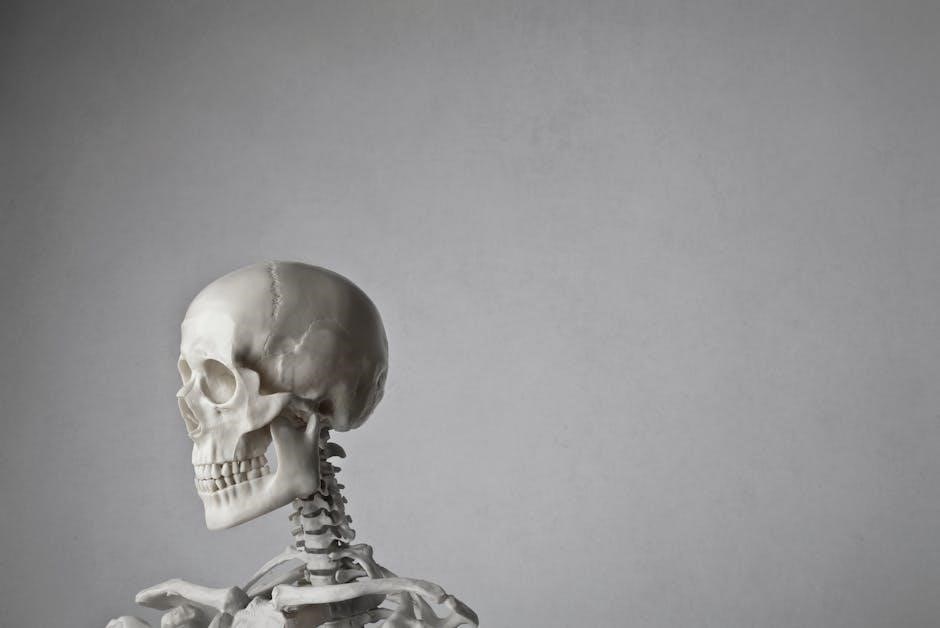
Utilizing Technology for Learning
Technology enhances anatomy and physiology learning through interactive tools like 3D models, virtual dissections, and mobile apps. These resources provide immersive, engaging experiences, simplifying complex concepts and improving retention for students.
10.1 Anatomy and Physiology Apps
Anatomy and physiology apps like Complete Anatomy and Anatomy 4D offer interactive 3D models, simulations, and quizzes. These tools enable students to visualize complex structures, track physiological processes, and test their knowledge, making learning engaging and accessible on mobile devices.
10.2 Virtual Dissection Tools
Virtual dissection tools provide immersive learning experiences, allowing students to explore anatomical structures digitally. Platforms like ZSpace and Visible Body offer detailed 3D models, enabling users to dissect and examine organs virtually, enhancing understanding without the need for physical specimens.
10.3 Interactive 3D Models
Interactive 3D models revolutionize anatomy and physiology learning by enabling students to visualize and explore complex structures dynamically. These models allow users to rotate, zoom, and interact with detailed representations of organs and systems, fostering deeper understanding and retention of anatomical relationships and physiological processes.

Common Mistakes to Avoid
Common mistakes include overloading with information, neglecting regular reviews, and not seeking help when struggling. These errors hinder effective learning and retention of complex anatomical and physiological concepts.
11.1 Overloading with Information
Overloading with information is a common mistake, as it can lead to confusion and decreased retention; Use flashcards, focus on key concepts, and break study sessions into manageable chunks to avoid overwhelm and enhance effective learning.
11.2 Neglecting to Review Regularly
Neglecting regular review leads to poor retention and understanding of complex concepts. Consistency is key to mastering anatomy and physiology. Schedule frequent study sessions, use flashcards, and engage in active recall to reinforce learning and ensure long-term retention of material.
11.3 Not Seeking Help When Struggling
Failing to seek help when struggling can lead to significant knowledge gaps and decreased performance. Don’t hesitate to ask instructors, join study groups, or use online resources for clarification. Proactive support-seeking ensures better understanding and retention of complex anatomy and physiology concepts.
12.1 Summary of Key Takeaways
The study of anatomy and physiology is foundational for understanding human structure and function. Utilizing resources like flashcards, study guides, and interactive tools enhances learning. Regular review, practical applications, and staying motivated are essential for success in this complex yet rewarding field of study.
12.2 Encouragement for Continuous Learning
Embrace lifelong learning to master anatomy and physiology. Utilize study guides, interactive tools, and resources to deepen understanding. Set achievable goals, celebrate progress, and stay curious. Continuous effort leads to mastery, fostering a rewarding journey in this vital field of study.
